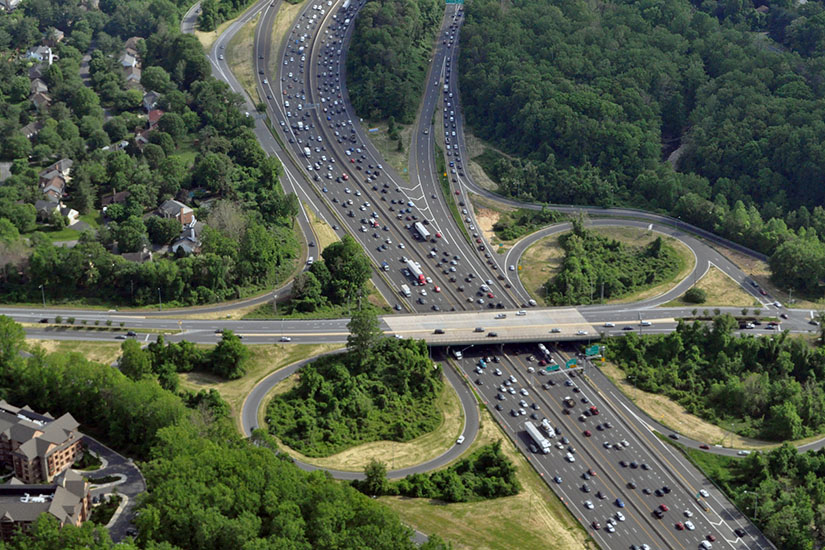By David Jahng
Capital News Service
Gov. Larry Hogan’s plans for expanding the Capital Beltway and I-270 could be pushed back for a year by a bill that would first require a completed environmental assessment.
Maryland House Bill 91 would require all pre-solicitation reports for Public-Private Partnerships — or P3s — to be held until an Environmental Impact Statement is finished.
This would force Department of Transportation and the Maryland Transportation Authority to pull their current pre-solicitation report, and not present a new one until 2020.
The plan costing $9 to $11 billion would ease traffic on the beltway (I-495) and I-270 via new construction of two toll lanes, or a combination of toll lanes among 15 alternatives.
The current pre=solicitation report proposes one or more private corporations fund and construct the project, after signing a contract that pays them back in toll revenue.
Pete Rahn, Maryland’s transportation secretary, told lawmakers the year-long delay would cost $270 million to $300 million, a burden that would fall onto the private sector, potentially deterring bidders.
Rahn said that due to congestion, GPS applications have begun routing cars through neighborhood roads that were never built to withstand large amounts of traffic.
“We are facing a serious crisis for transportation within the region,” Rahn said. “By 2040, most of the beltway (drivers) are going to be in gridlock for many hours more than what they currently are.”
Rahn said the Federal Highway Administration has encouraged states to complete the environmental study and pre-solicitation in tandem.
He called the expansion plan part of a balanced approach to transit and highway investment, citing the Purple Line, a recent P3 project that had its pre-solicitation report submitted after an environmental impact survey.
Delegates want more details, public input
Delegates expressed concerns that the state had not provided enough opportunity for public input, or details on expected tolls.
State transportation officials will expand community outreach on the project, Rahn told lawmakers.
Rahn said the cost to drivers would be less than those on the privately run portion of I-66 in Virginia, where tolls hit a high of $46.75 last year, but it would have to be enough to manage the amount of people on the roadways.
“We want to reduce congestion, but it also has to be a solution that pays for itself,” said Rahn.
Del. Marc Korman, D-Montgomery, co-sponsor of the bill, said there were many questions about the expansion project that have gone unanswered.
“This is not a question of whether or not you want to reduce traffic,” Korman said. “We just need a lot more information before we enter a lease worth … 9 to 11 billion dollars.”
Korman said holding a pre-solicitation report until after an environmental study was drafted would be a way to mitigate risks, and that it would not kill the proposal.
“We think the process is broken,” Brad German, co-chair of Citizens Against Beltway Expansion, told Capital News Service. “And we want them to fix the process.”
German said high-priced toll lanes would not provide a lasting solution to traffic issues, and that the general public needed more input on the governor’s proposal.
“Left unchanged, MDOT’s current process will remain a sham,” German told legislators. “One that a great many Maryland residents understandably will have no confidence in.”




Maryland HB 91 is a liberal Democratic delaying tactic to annoy Republican Governor Hogan and probably to try and get more money for public transportation in Baltimore city!
The purpose of the I-270 etal construction is to reduce congestion and speed up traffic.
Will there be more air pollution, probably not in the short term e.g. a year (less traffic jams)! As more traffic is added to I-270 etal over the following years yes!
End of study, get on with the bids for construction to ease congestion!